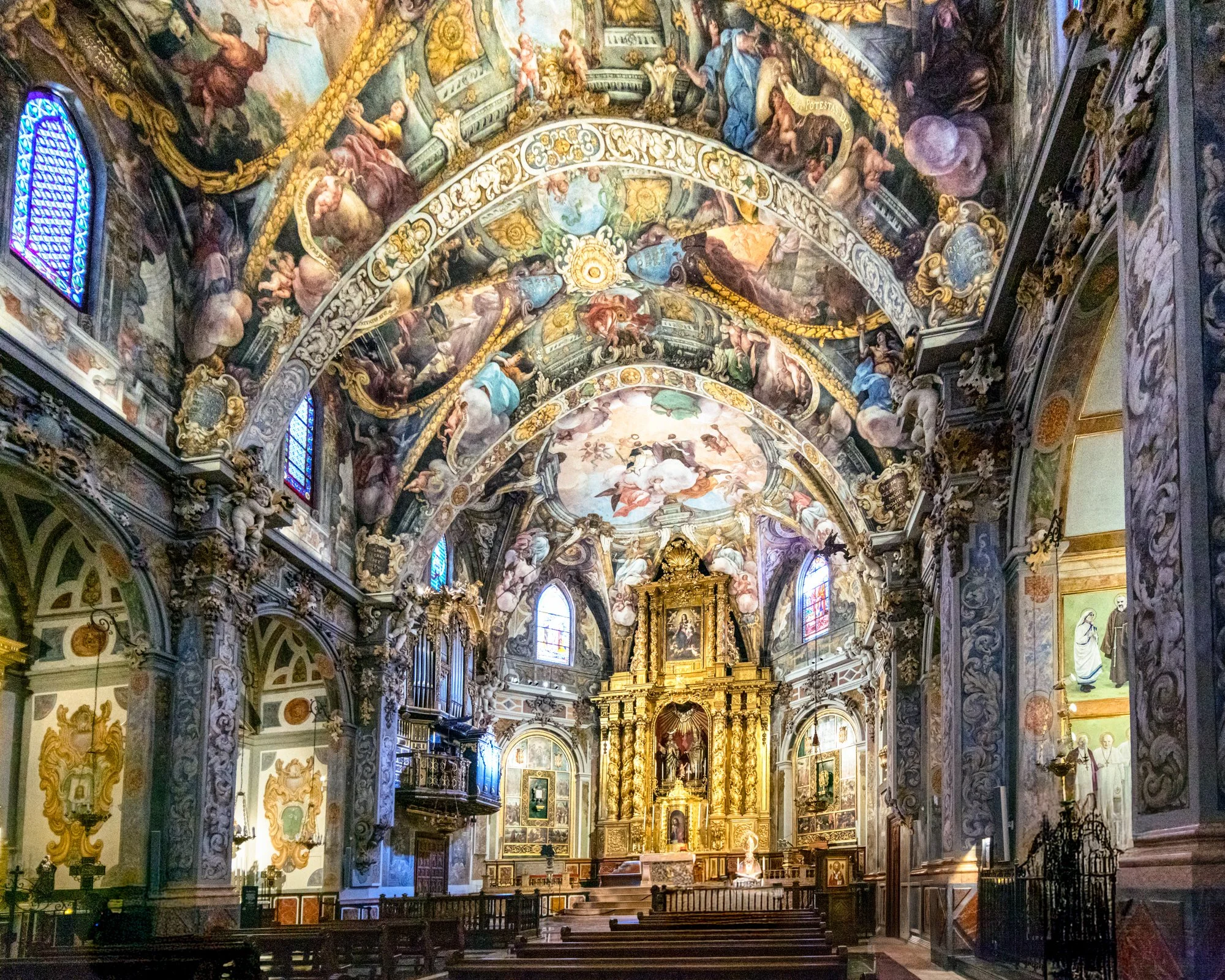Interior of the Church of Saint Nicholas of Bari and Saint Peter Martyr, Valencia, Spain.
Originally built in the 13th century in Gothic style, the church was transformed in the late 17th century with richly painted Baroque frescoes. The ceiling scenes, completed by Antonio Palomino and Dionís Vidal (1690–1693), illustrate the lives of the church’s two patron saints.
In the maze of narrow streets in Valencia’s historic center, not far from the bustle of the central market and the Cathedral, there’s a doorway that many pass by without a second glance. But behind it lies one of the most breathtaking interiors in Spain: the Church of Saint Nicholas of Bari and Saint Peter Martyr — often called the “Sistine Chapel of Valencia.”
The church’s origins date back to the 13th century, shortly after King James I of Aragon reconquered the city from Muslim rule in 1238. Built on the site of an earlier mosque, it became one of the first twelve Christian parishes in the city. Its original structure was Gothic, with a single nave, ribbed vaults, and side chapels — elements still visible today if you look past the visual feast of Baroque ornamentation.
The transformation that gave Saint Nicholas its current splendor came in the late 17th century, when the church was richly redecorated in the Baroque style. This was part of a larger movement in Catholic Europe to inspire awe and devotion through grand, emotional art. In Valencia, the project was led by the Dominican order, who commissioned the best local artists to turn the church into a dazzling space of storytelling and worship.
And they delivered. The ceilings and upper walls are completely covered with frescoes painted between 1690 and 1693 by Antonio Palomino, court painter to Charles II of Spain, and executed by his student Dionís Vidal. The frescoes narrate the lives of Saint Nicholas of Bari (known for his generosity and miracles) and Saint Peter Martyr (a Dominican friar martyred for his faith). The artwork wraps the viewer in a swirling panorama of angels, clouds, martyrdom scenes, and divine visions — all unfolding above your head in glowing color and dynamic movement.
Light streams in through the stained-glass windows, catching the gilded carvings of the high altar and chapels. The organ pipes shimmer under painted arches, and every detail — from stucco cherubs to marble inlays — contributes to a sense of otherworldly beauty. But this isn’t just art for art’s sake. It was meant to move people, to lift them toward the heavens, to remind them of the power and glory of faith.
Today, Saint Nicholas Church is not only a functioning parish but also a cultural gem. It has undergone meticulous restoration in recent years, revealing the full brilliance of the frescoes and reviving its place in the life of the city. Whether you're drawn by faith, history, or beauty, this church offers one of the most stunning and surprising experiences in Valencia.


